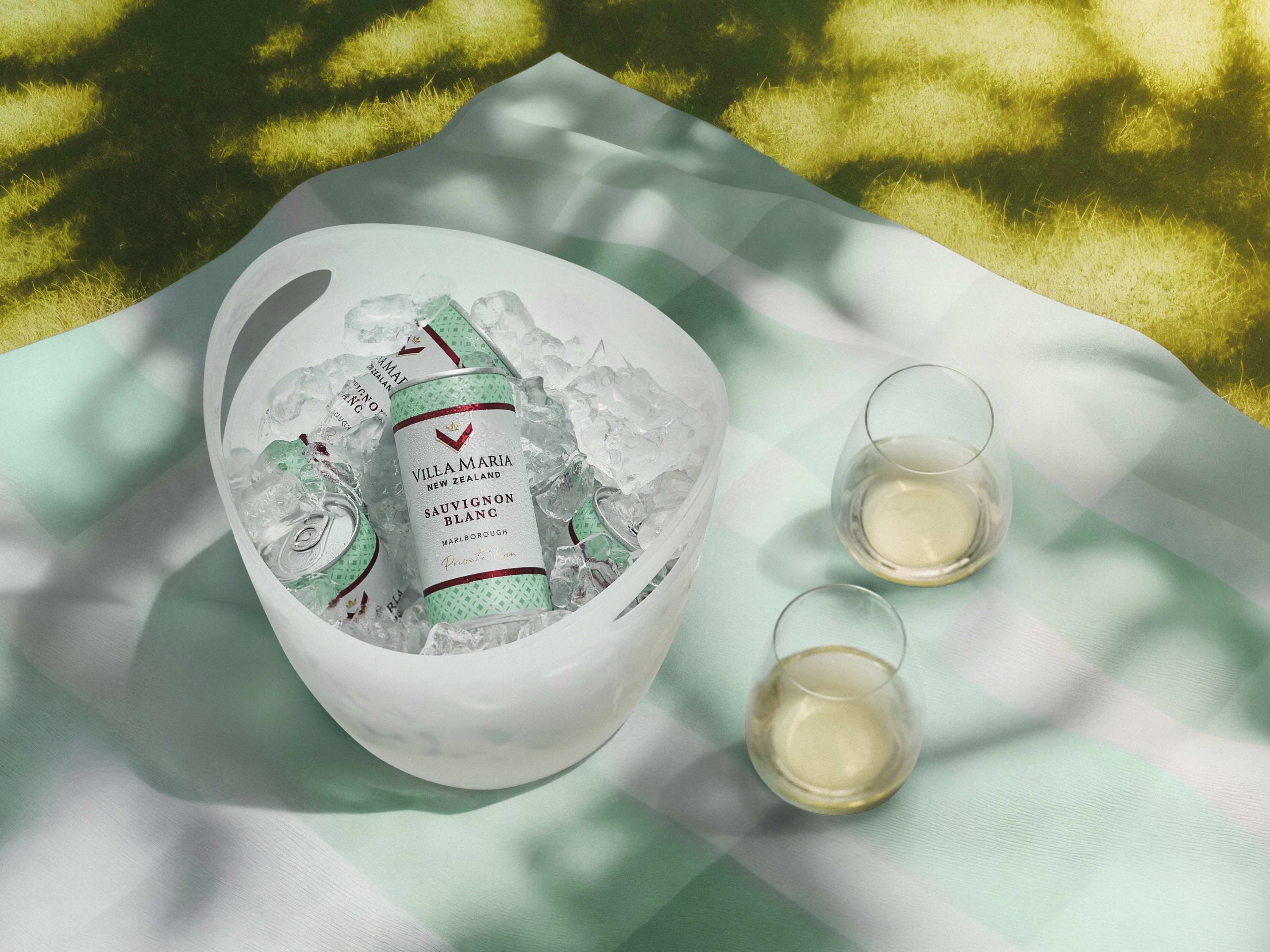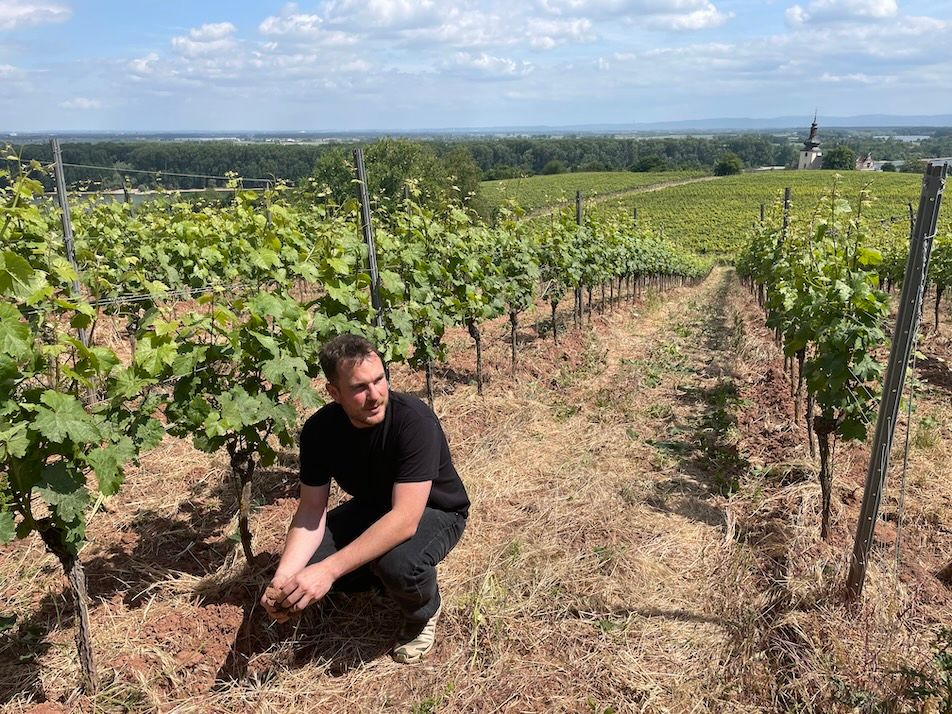“2021 is true to the great Loire vintages – fresh and crisp, with good acidity for the sparkling wines as well as good density and excellent aromas and flavours for the still wines.”
Impressive statistics bombard you when you visit the Loire Valley. It is, you are reminded, the largest AOP vineyard area for white wines in France; the largest AOP vineyard area for Rosé wines in the country; and the largest AOP area for sparkling wine there (excluding Champagne). Vines were first planted in the Loire as far back as the fifth century, and it is now the third biggest French AOP wine region by volume, with 280 million AOP/IGP bottles sold every year in 160 different countries.

Ambitious target: Sylvain Naulin
What is especially compelling is the newest statistic released by generic trade body InterLoire, namely that over 20% of the region’s vineyards are now certified organic. In 2021, almost 65% of vineyards were sustainably or organically farmed. The InterLoire CEO, Sylvain Naulin, has set wineries an ambitious target of attaining 100% certified ‘green’ labels by 2030. That may be as unrealistic as the UK government’s stated plan of having 100% electric car sales by the same year, but you have to applaud InterLoire for its intent. The message is clear: the association and the majority of its 3,600 growers, 430 negociants and 21 co-operatives are wedded to the concept of sustainability.
The Haute Valeur Environnementale (HVE) certification forms the basis behind the sustainability drive. Promoting good, environmentally friendly practices across three levels, the highest – level 3 – is based on indicators such as respect for biodiversity, a strategy to counter insect pests and sound management of fertiliser and irrigation. The most basic, level 1, certifies that a grower has a basic knowledge of “sustainable” cultivation. Levels 2 and 3 are certified by a body approved by the Ministry of Agriculture.
While exports have risen by 18% in value in the last five years, they are slightly down in that time to the UK which still remains the second biggest export market after the USA. The recent typical annual turnover of Loire wines – €1.3 billion – is set to fall, however, after yields for the 2021 harvest were down 31% on the 5-year average. Frosts were chiefly to blame for the drop, which was marked for Sauvignon Blanc and Melon de Bourgogne.
According to Pierre-Jean Sauvion, chair of the InterLoire communication panel, “the end of the growing season in August and September gave us very good levels of ripeness. 2021 is true to the great Loire vintages – fresh and crisp, with good acidity for the sparkling wines as well as good density and excellent aromas and flavours for the still wines. The sweet wines are velvety with a deliciously lifted structure and are bursting with tropical fruit flavours.”
So which are the estates to keep an eye on?
The Buyer experienced an expansive tasting of Loire wines and recent vintages during a four-day spring visit to the region. A plethora of producers from Vouvray, Saumur-Champigny, Muscadet, Touraine, Anjou and elsewhere showed a multitude of excellent wines, offering some of the best value in France.
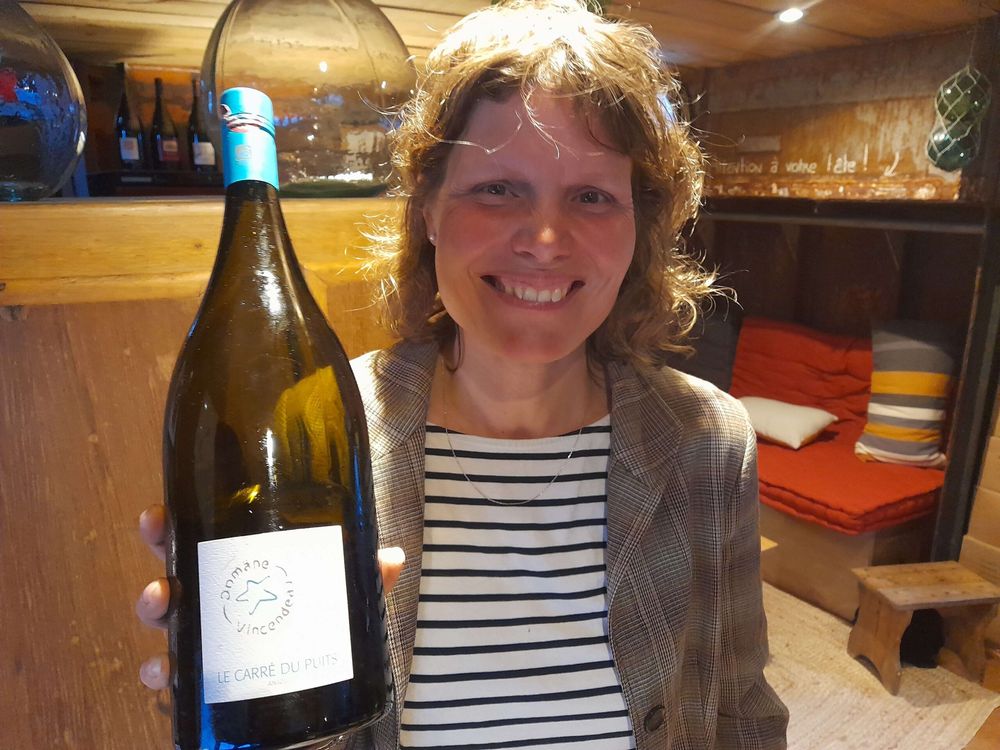
Liv Vincendeau
One Cremant de Loire that really stood out was the biodynamically-certified Domane Vincendeau Loiregold 2020 from Anjou. Made from 100% Chenin Blanc grapes by Liv Vincendeau, an engaging Franco-German, this has wonderful volcanic nervous energy with 4g/l dosage, and is imported into the UK by Vagabond. Meanwhile, another Cremant to impress, the Dumnacus Blanc Brut 2017, is stocked by Liberty. Comprised of 68% Chenin Blanc, 17% Chardonnay, 13% Grolleau and 2% Cabernet Franc, this spent four years on the lees.
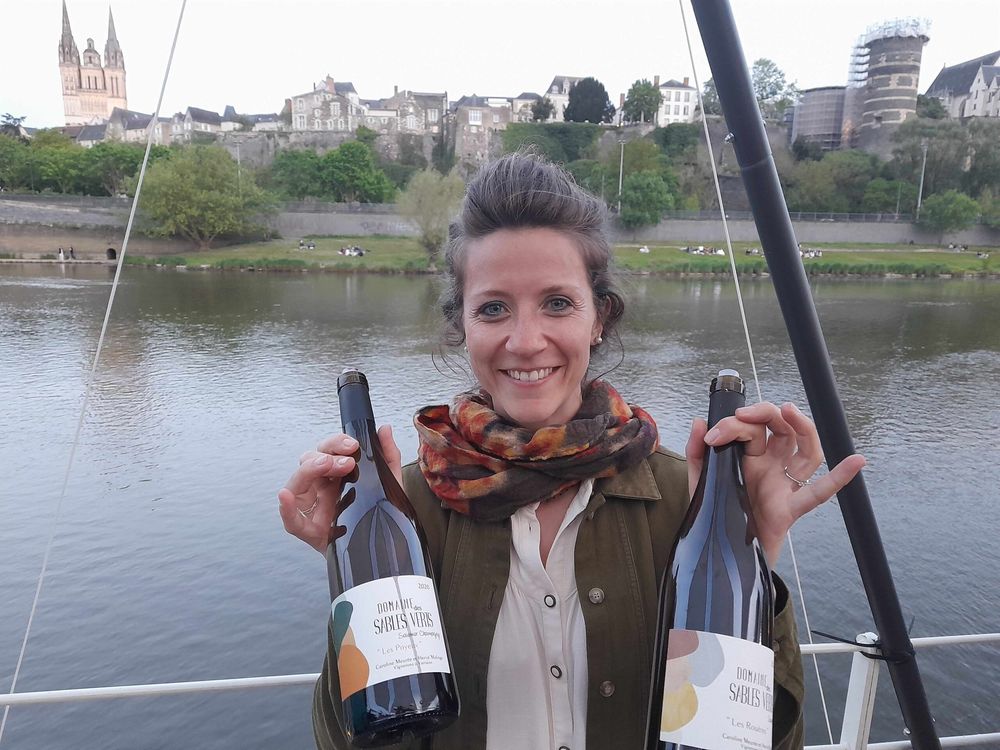
Caroline Meuree
Liberty also takes a large allocation of two good mid-market labels from Saumur-Champigny producer, Les Sables Verts. “Les Poyeux” 2020 (100% Cabernet Franc) and “Les Roueres” 2020 (100% Chenin Blanc) are skilfully fashioned by a young pair of winemakers, Caroline Meuree and Herve Malinge, who met while studying in Bordeaux. The former, which comes from 70-year old vines yielding just 38 hl/ha, sees only stainless steel and retains lovely, elegant fruit expression with pure, dusty tannins. The white, matured in 50% new 12hl foudres, has fabulous intensity and length as well as minimal sulphur dioxide levels for those with a low tolerance (23mg/l free and 32mg/l total SO2).
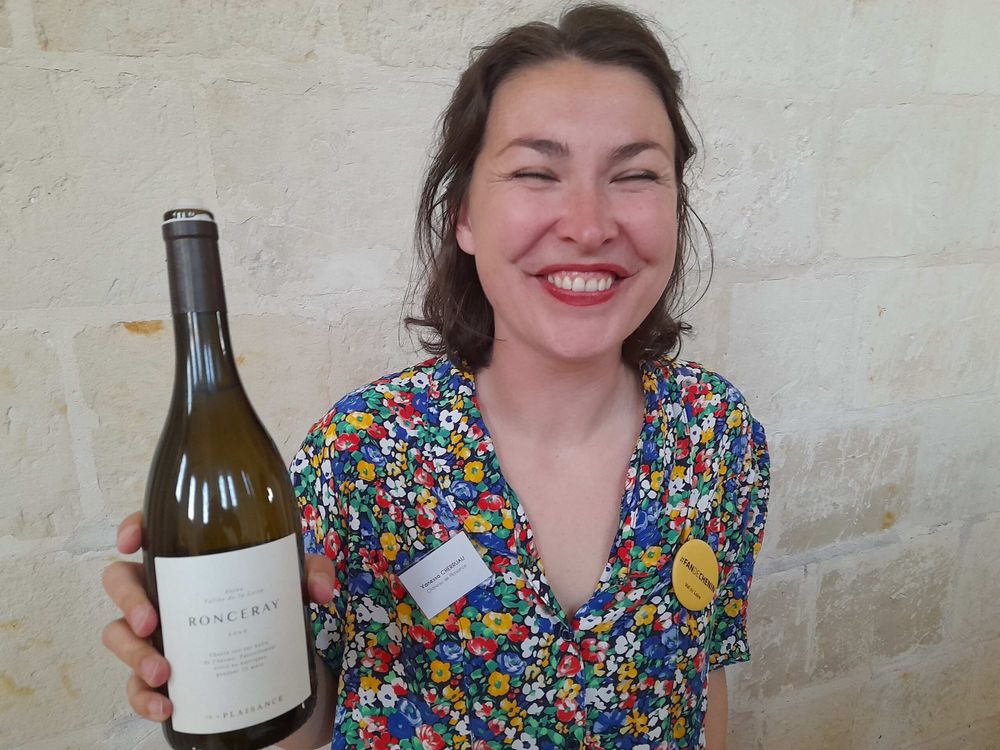
Vanessa Cherruau
Another cracking Chenin Blanc, from Anjou producer Chateau de Plaisance’s Ronceray label, is imported by Lea & Sandeman. Vanessa Cherrueau, a larger-than-life character with a permanent smile on her face, farms biodynamically in Rochefort sur Loire, and has crafted a wine with lovely intensity and length. She ferments in older oak with wild yeasts.
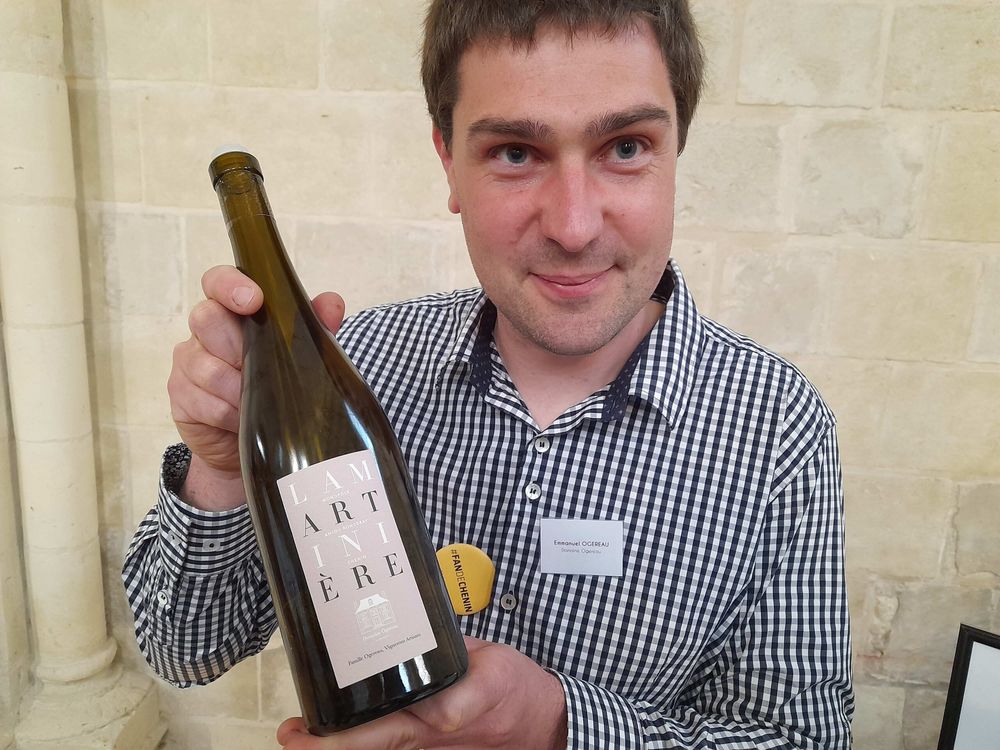
Emanuel Ogereau
Emanuel Ogereau, winemaker for renowned Anjou estate, Domaine Ogereau, likewise crafted a superb example of Chenin Blanc with his ‘La Martiniere’ 2020. “We are rediscovering dry Chenin Blanc in a sweet region,” Ogereau said. “Anjou is rising and our geology is very interesting with a lot of different soils. For example, on the left bank of the Layon river, we have vineyards on ancient decomposed schist; on the right bank, we have volcanic rock.”
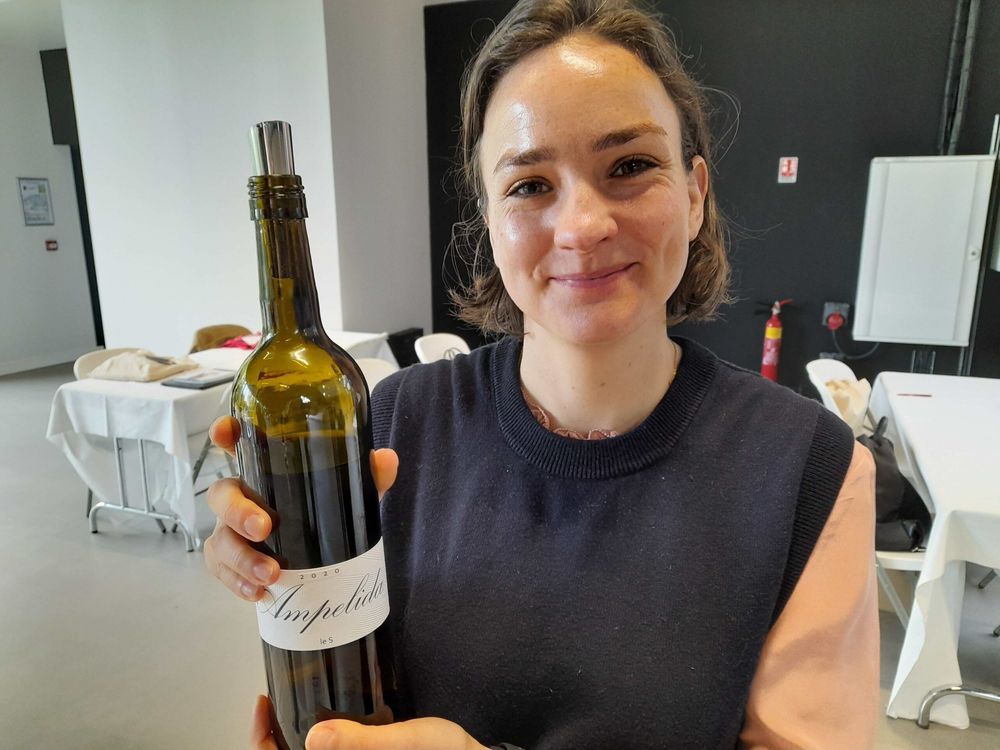
Isabella Meuli
Two English female assistant winemakers have been helping to produce some notable white wines from the region: Camilla Murray, at biodynamically-certified Chateau de Chaintres in Saumur, and Isabella Meuli, at Ampelidae, an organically-certified IGP Val de Loire producer in Neuville-de-Poitou. The former’s ‘Clos des Oratories’ 2020 label showed superbly, coming from ultra low-yielding 90-year old Chenin Blanc vines on an estate owned by the same family for the last 95 years. “It’s a beautiful half-hectare parcel,” Murray said. “We used wild yeasts, added very little SO2 as the pH was 3.18 and matured the wine in big old wooden casks and 160-litre terracotta vessels. St. John Wines in London has it.”
Meuli, an ex-insurance broker from London who studied Chinese at university there, “learnt winemaking on the job during several harvests” as she put it, and is working under technical director, Gilles de Bollardier. Ampelidae’s “Le S” Sauvignon Blanc label, grown on tuffeau, limestone, clay and silex soils is a premium example of the varietal, and the estate are hoping to find a UK distributor.
Cabernet Franc, Gamay and… yet more Chenin
While white wines make up 45% of production in the Loire, reds form 19%. A pair of Cabernet Francs from Saumur producer, Domaine du Vieux Pressoir, stood out. The estate, which will be certified organic next year, exports 35% of its 60,000-bottle annual production, with the Graft Wine Company in London being its UK importer. It takes both its ‘Elegance’ 2020 label, which is aged in old oak, and the ‘Origine’ 2019 label (elevage in concrete).
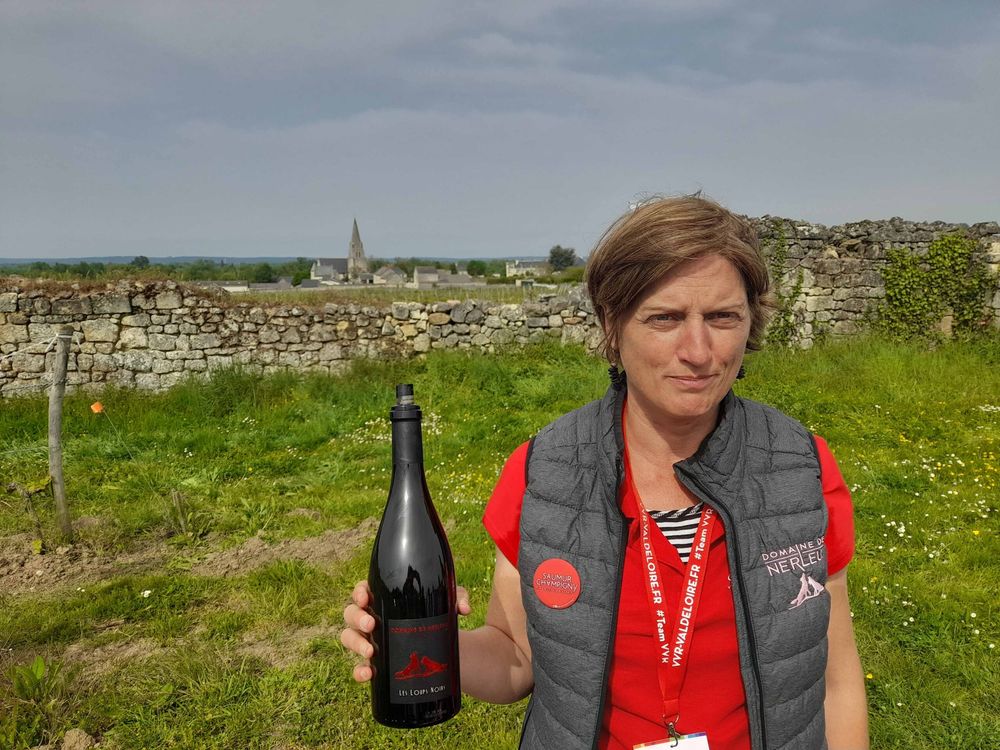
Amelie Neau
Theatre of Wine in London imports another enchanting Cabernet Franc: Domaine de Nerleux’s “Les Loups Noirs” 2018 label. Established as far back as the 16th century, this Saumur-Champigny estate has stayed in the same family, with winemaker Amelie Neau being the ninth generation. 25-year old organically-farmed vines produce seductive red fruit with kirsch notes, while some structure is provided by 10% new oak.
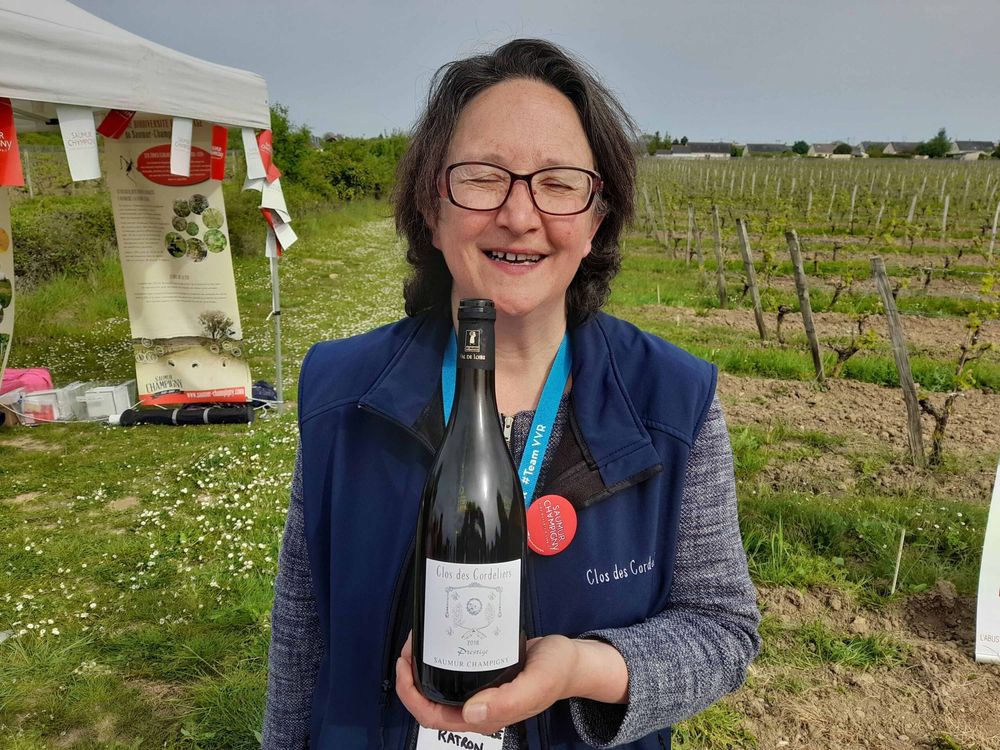
Marie-Francoise Ratron-Galet
The Wine Society stocks another very enticing Cabernet Franc from Saumur Champigny: the Clos des Cordeliers estate’s ‘Prestige’ label, which is made only in the best years from low-yielding vines, now 55-years old, on limestone soils. The 2018, which saw stainless steel and no oak, is only the second vintage made by Marie-Francoise Ratron-Galet after the death of her husband, and yielded just 30hl/ha.
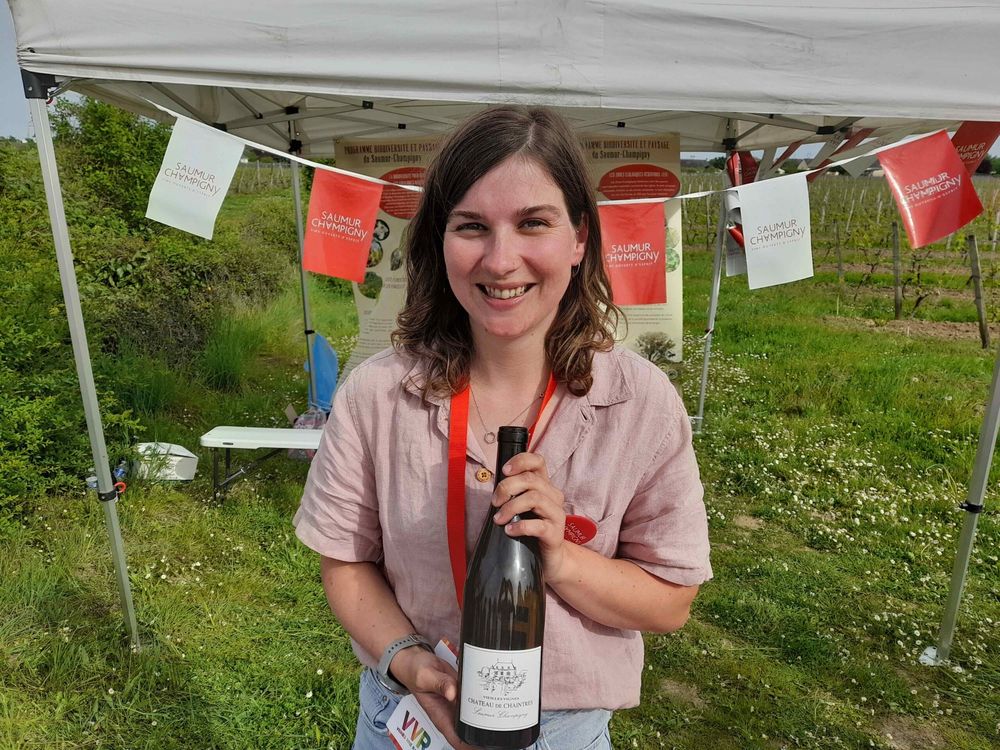
Camilla Murray
Even older Cab Franc vines – planted in 1960 in a walled vineyard – prompting a ‘Vieilles Vignes’ label, provided the fruit for Camilla Murray’s first vintage at Chateau de Chaintres, the excellent 2020.

Benedicte Petit
One of the Loire Valley’s 24 varietals grown is Gamay. A lovely example of it came from an Anjou estate south of Angers – Terra Vita Vinum, a domaine of 30 hectares. Benedicte Petit, the winemaker, uses 30% new oak and 70% stainless steel to craft a label called ‘Chant de la Pierre.’ The 2020 vintage is imbued with freshness and flavoursome red fruit. Both that and the winery’s excellent flagship white label, Grandes Rogeries 2020, made from Chenin Blanc vines on volcanic rock, are available through Robert Rolls in London.
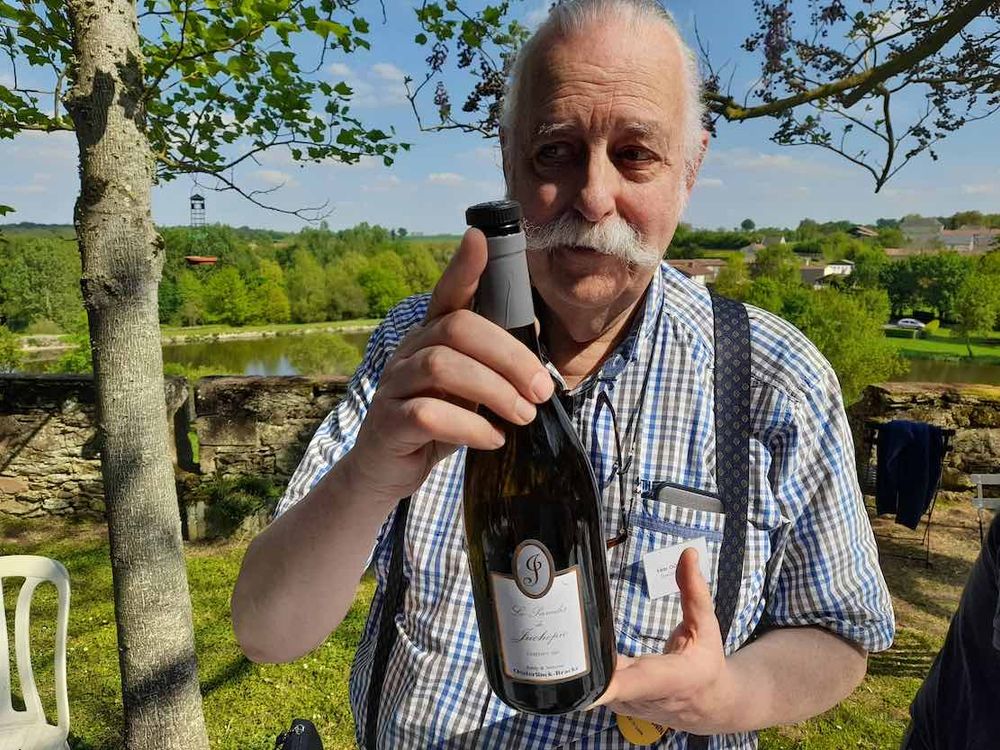
Eddie Oosterlinck
Still in Anjou, Eddie and Mileine Oosterlinck-Bracke, who are originally from Holland, make a complex Chenin from very old vines that are between 60 and 110 years-old, with a very low yield of 15 hl/ha. Their ‘Le Paradis de Juchepie’ label from their estate, Domaine de Juchepie, is fermented in an old basket-press and matured in 50% new and 50% old barriques after going through 100% malolactic fermentation. It is available through Friarwood Fine Wines in Fulham.
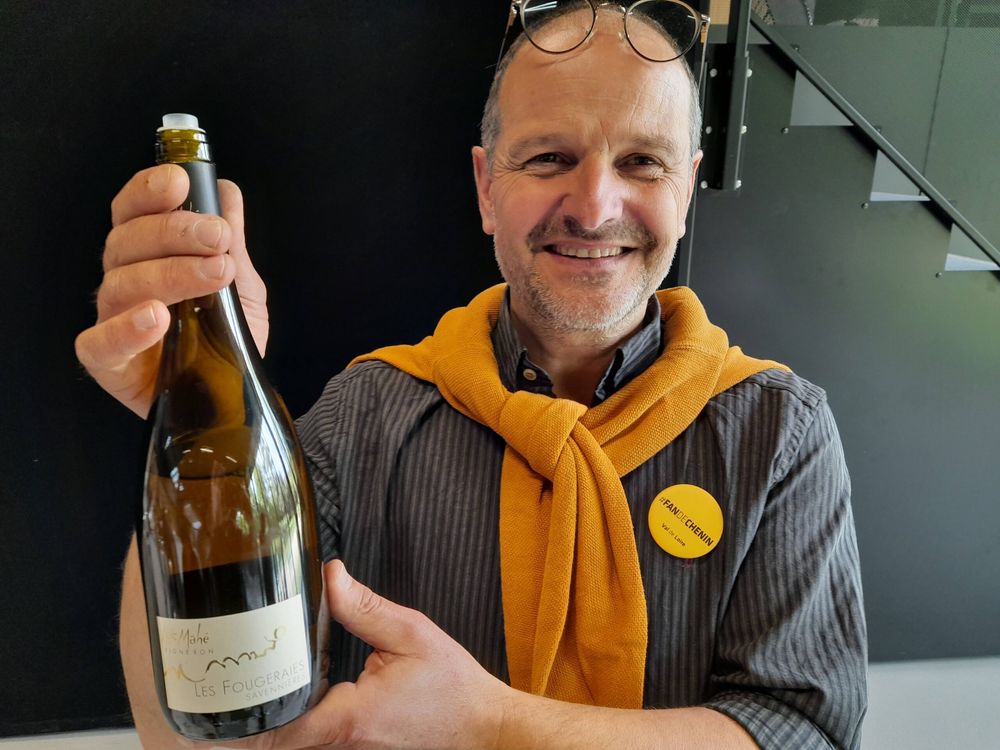
Loic Mahe
Friarwood also stocks another top Chenin from Savennieres, made by Loic Mahe, named ‘Les Fougeraies’ 2016. Biodynamically farmed vines on a small plot with a sandy topsoil yield 25hl/ha and wonderfully expressive fruit. Thanks to a pH of 3.05, Mahe is able to add minimal SO2 – just 20mg/l free and 40mg/l total.
Not far away, Evelyne de Pontbriand, owner-winemaker of Domaine du Closel, which is also certified biodynamic, fashions another superb Chenin from low-yielding vines that are 25-70 years of age. Her ‘Clos du Papillon’ 2019 label, named after a fabled site, is available though Lay & Wheeler and the Wine Society.
And finally the stickies…
No discourse on the Loire would be complete without reference to their outstanding stickies. Brompton Wines in London takes a sumptuous sweet Chenin Blanc from Chateau Soucherie in Coteaux de Layon. Vianney de Tastes, the splendidly-named winemaker, revealed that he made three passes through the vines for his 100% botrytised 2015 harvest. Located on schist soils at 120m, they yielded only 12hl/ha, with the wine containing 120g/l of residual sugar.
The yield was even lower for Vouvray producer, Domaine d’Orfeuilles, when it got just 5hl/ha from its then 45-year old vines for their wonderful Reserve D’Automne Moelleux Blanc 2009 (86g/l RS). For those preferring off-dry, Domaine Huet’s Haut Lieu 2020 (19g/l RS) provided a regal ending to a tasting, as InterLoire likes to proclaim… of “the world’s most diverse range of wines.”


